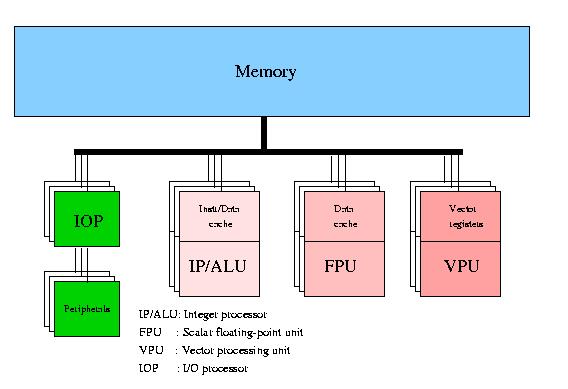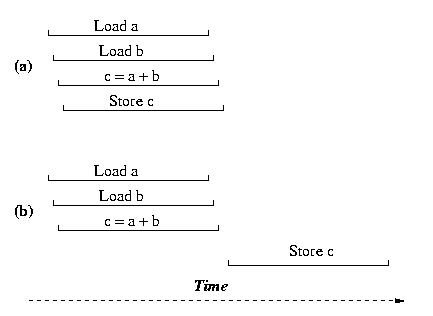
Figure 1:
Block diagram of a vector processor.
The single-processor vector machine will have only one of the vectorprocessors depicted and the system may even have its scalar floating-point capability shared with the vector processor (as was the case in some Cray systems). It may be noted that the VPU does not show a cache. The majority of vectorprocessors do not employ a cache anymore. In many cases the vector unit cannot take advantage of it and execution speed may even be unfavourably affected because of frequent cache overflow.
Although vectorprocessors have existed that loaded their operands directly from memory and stored the results again immediately in memory (CDC Cyber 205, ETA-10), all present-day vectorprocessors use vector registers. This usually does not impair the speed of operations while providing much more flexibility in gathering operands and manipulation with intermediate results.
Because of the generic nature of Figure 1 no details of the interconnection between the VPU and the memory are shown. Still, these details are very important for the effective speed of a vector operation: when the bandwidth between memory and the VPU is too small it is not possible to take full advantage of the VPU because it has to wait for operands and/or has to wait before it can store results. When the ratio of arithmetic to load/store operations is not high enough to compensate for such situations, severe performance losses may be incurred.
The influence of the number of load/store paths for the dyadic vector operation c = a + b (a, b, and c vectors) is depicted in 2.

Figure 2: Schematic diagram of a vector addition. Case (a) when two load- and one store pipe are available; case (b) when two load/store pipes are available.



